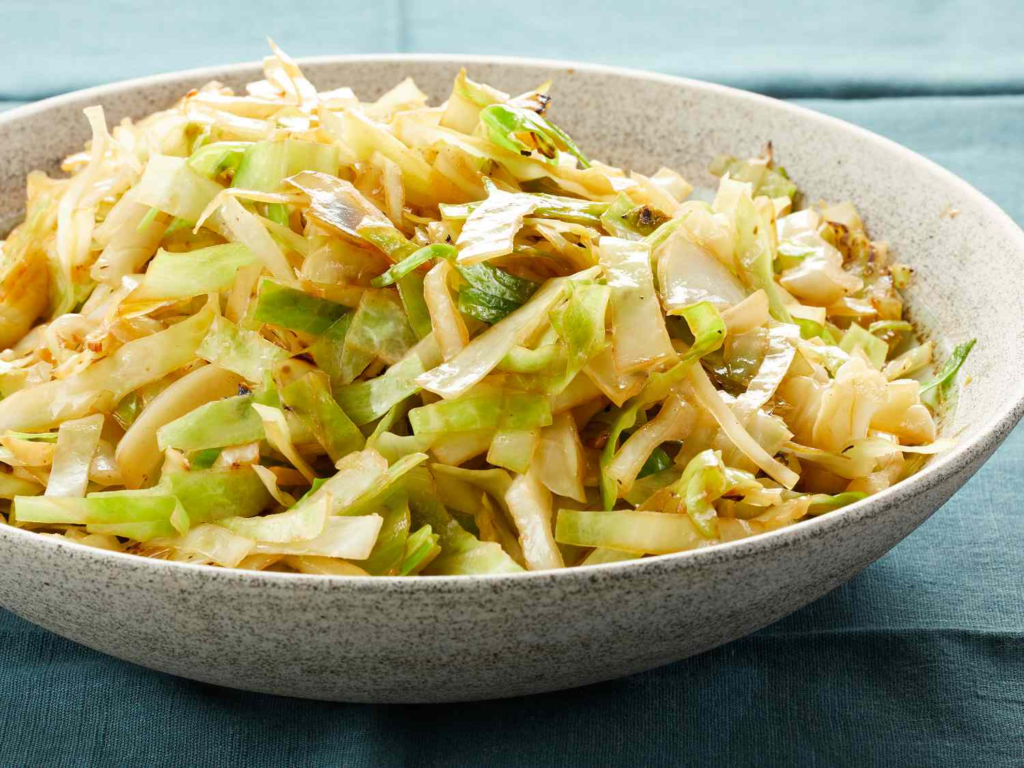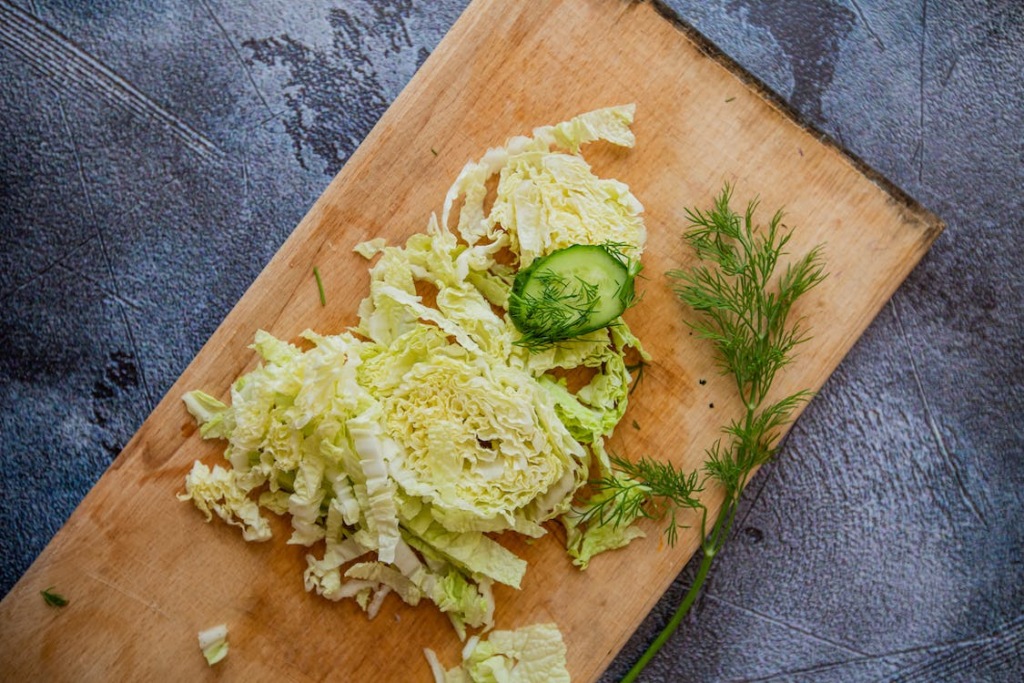How To Cook Cabbage Discover the ultimate guide to cooking cabbage, a versatile and nutritious vegetable. Whether you’re boiling, sautéing, or roasting, we’ll show you simple, effective methods to bring out its natural sweetness and tender texture. Perfect for healthy sides, hearty mains, or adding a crunch to salads, cabbage can elevate any meal. From selecting the right type to mastering cooking techniques, get ready to make cabbage the star of your kitchen with tips that ensure delicious results every time. Join us to unlock the secrets of cooking cabbage to perfection!

Key Takeaways:
Cooking cabbage can be a simple and rewarding process. Here are the key takeaways for mastering the art of cooking cabbage, ensuring delicious and nutritious results:
- Selection and Preparation:
- Choose fresh cabbage with crisp, vibrant leaves.
- Remove the outer leaves and core, then wash and chop or shred as desired.
- Cooking Methods:
- Boiling: Boil cabbage in salted water for 5-10 minutes until tender but still crisp. Ideal for a softer texture.
- Sautéing: Cook with a little oil over medium heat for 5-8 minutes. Add spices or garlic for extra flavor. This method enhances its natural sweetness.
- Roasting: Toss with oil and seasonings, then roast at 425°F (220°C) for 20-25 minutes. Roasting brings out a caramelized, nutty flavor.
- Steaming: Steam for 5-7 minutes for a crisp-tender texture, preserving most nutrients.
- Stir-Frying: Quick and high-heat cooking for a crunchy texture, perfect for Asian-inspired dishes.
- Seasoning and Flavoring:
- Cabbage pairs well with a variety of seasonings, from simple salt and pepper to garlic, onion, and herbs.
- Acidic components like vinegar or lemon juice can enhance its flavor.
- Health Benefits:
- Cabbage is low in calories but high in fiber and vitamins C and K, making it a nutritious addition to any meal.
- Versatility:
- Can be used in a wide range of dishes, from soups and stews to salads and wraps.
- Storage:
- Raw cabbage can be stored in the refrigerator for up to two weeks, while cooked cabbage can last 3-5 days in the fridge.
By following these key takeaways, you’ll be able to cook cabbage in a variety of ways, ensuring it is both flavorful and nutritious, adding a healthy and delicious component to your meals.

How to Make cabbage
Making cabbage, whether as a side dish or part of a larger recipe, is simple and versatile. Below is a basic guide on how to prepare and cook cabbage, turning this humble vegetable into a delicious addition to your meals.
Ingredients:
- 1 head of cabbage
- Salt (to taste)
- Pepper (to taste)
- 2 tablespoons of olive oil or butter (for sautéing or roasting)
Instructions:
Preparing the Cabbage:
- Clean the Cabbage: Remove any tough outer leaves. Rinse the cabbage under cold water to remove any dirt.
- Cut the Cabbage: Place the cabbage on a cutting board, core side down. Cut the cabbage into quarters, slicing through the core. Then, cut out the hard core from each quarter. Slice or chop the quarters depending on your recipe or preference.
Cooking Methods:
Boiling:
- Bring a large pot of salted water to a boil.
- Add the cabbage and cook for about 5-10 minutes, or until tender but still crisp. This method is great for a softer texture.
- Drain well and season with salt and pepper to taste. Add a knob of butter for extra richness if desired.
Sautéing:
- Heat olive oil or butter in a large skillet over medium heat.
- Add the chopped or sliced cabbage, stirring occasionally, until it starts to soften and brown at the edges, about 5-8 minutes.
- Season with salt, pepper, and any other desired seasonings.
Roasting:
- Preheat your oven to 425°F (220°C).
- Toss the chopped cabbage with olive oil, salt, and pepper. Spread it out on a baking sheet in a single layer.
- Roast in the oven until the edges are crispy and parts of the cabbage have turned a golden brown, about 20-25 minutes.
Steaming:
- Fill a pot with enough water to reach the bottom of a steamer basket. Bring it to a boil.
- Place the chopped or sliced cabbage in the steamer basket. Cover and steam until the cabbage is tender but still crisp, about 5-7 minutes.
Serving Suggestions:
- Serve warm as a side dish, seasoned with additional salt, pepper, and a drizzle of olive oil or a pat of butter.
- Incorporate into soups, stews, or casseroles for added texture and flavor.
- Use as a base for salads or slaws, mixing with your favorite dressing and other fresh vegetables.
Cabbage can be a delightful addition to your cooking repertoire, with each cooking method bringing out different flavors and textures. Experiment with spices, herbs, and cooking techniques to find your favorite way to enjoy this versatile vegetable.
Learn. How To Cook Greens
FAQ
A: Begin by removing the loose outer leaves and rinsing the cabbage under cold water. Place the cabbage on a cutting board, core side down, and cut it into quarters using a sharp knife. Then, cut out the tough core from each quarter. You can slice the quarters into thin strips for sautéing or coleslaw, chop them for stews and soups, or keep the quarters intact for roasting.
2. How do I make my cabbage less bitter?
A: Cabbage can sometimes have a bitter taste, especially if it’s overcooked. To reduce bitterness, try adding a pinch of sugar while cooking. Cooking methods like roasting or sautéing with a bit of fat (like olive oil or butter) can also help mellow the bitterness and bring out the vegetable’s natural sweetness.
3. Can I cook cabbage in advance?
A: Yes, you can cook cabbage in advance. Once cooked, allow it to cool completely and then store it in an airtight container in the refrigerator for up to 3-5 days. Reheat it in a microwave, oven, or on the stovetop until warm.
4. What are some seasoning ideas for cabbage?
A: Cabbage pairs well with a variety of seasonings. Classic options include salt, pepper, and butter for simplicity. For more flavor, try garlic, onion, caraway seeds, dill, thyme, or bay leaves. Acidic elements like apple cider vinegar or lemon juice can also enhance its flavor.
5. How can I tell when cabbage is cooked?
A: Cabbage is cooked when it’s tender but still offers a bit of resistance. For boiling or steaming, this usually takes 5-10 minutes. Sautéed cabbage should be slightly wilted and may have some browned edges. Roasted cabbage will have crispy, caramelized edges. Avoid overcooking to prevent it from becoming mushy and overly sulfurous.
6. Is cabbage healthy?
A: Absolutely. Cabbage is low in calories but high in fiber and nutrients, including vitamin C, vitamin K, folate, and antioxidants. It’s beneficial for digestion and may have properties that reduce inflammation and lower blood pressure.
7. Can I freeze cooked cabbage?
A: Yes, cooked cabbage can be frozen. Cool it completely, then transfer it to freezer-safe bags or containers. It can be frozen for up to 3 months. Thaw in the refrigerator overnight before reheating.
8. How do I avoid soggy cabbage?
A: To avoid soggy cabbage, don’t overcook it and ensure it’s drained well after boiling or steaming. When sautéing or roasting, don’t overcrowd the pan or baking sheet, as this can cause the
Learn. How To Cook Sweet Potatoes in Oven
Serve:
- Serve the cooked cabbage as a side dish with your favorite protein or as a base for other dishes.
- Remember, cooking times may vary based on the size and type of cabbage, as well as your preferred level of tenderness. Adjust seasonings to taste and feel free to get creative with additional ingredients and spices!